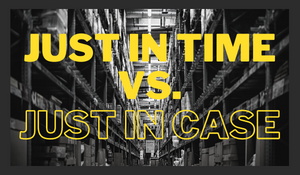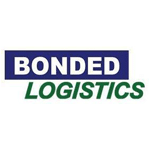Just in Time vs Just in Case Inventory Management
The COVID pandemic brought a lot of changes along with it. One of these changes, is how much inventory businesses are deciding to keep on hand. Just-in-Time inventory management might have worked well before, but after a global pandemic and supply chain shortages, what is the best method for the future? How do you address supply chain uncertainty?
What does “Just in Time” mean?
Several of the lean manufacturing practices we used today, were developed after World War II by Toyota. Instead of making large quantities of products at a time they focused on a production rate that matched demand. It also made sense, when it came to defects or design changes, where excess parts inventory would have to be revised or abandoned, so they did not end up with a lot of unusable parts. “In 1984, General Motors had 3,500 suppliers compared to 225 for Toyota, and carried five days of inventories valued in 1982 dollars at $5 billion. Toyota, in contrast, had perfected a system in which parts for its assembly lines might be delivered daily or several times a day.” By reducing the quantity of products being made daily it cut down on production costs – employment costs, parts, and storage of those additional parts and final products.
What does “Just in Case” mean?
The Just in Case model is where businesses carry a larger inventory on hand, stocking more than they need so they have extra if there is a spike in demand or to combat inventory shortages. Although this model helps to ensure you have the products on hand when you need them, it also has its risks. It costs more money as you are carrying extra inventory, requires more warehouse space and a potential inventory overload.

Which one is Better?
With the supply chain delays we have seen in the past and continue to see, inventory arriving late, holding up production lines and delaying when items can be shipped to the customer, a Just in Case model might be the safer choice. Carrying extra inventory, does not necessarily mean you should stock up on everything. Look at your order history, find the items that continue to be best sellers over the years, have extra stock of those items. Also, review your history for seasonal trends to know when to start stocking up on items for a particular holiday or season (summer, winter, etc.). And include your warehousing partners in the review and decisions. As the saying goes, you’re only as good as your weakest link. 3PLs are very important in the supply chain and will offer the flexibility to handle the varying inventory requirements.
Do you need help streamlining your processes or implementing a Just in Case inventory model? Contact Cadre Technologies today!









